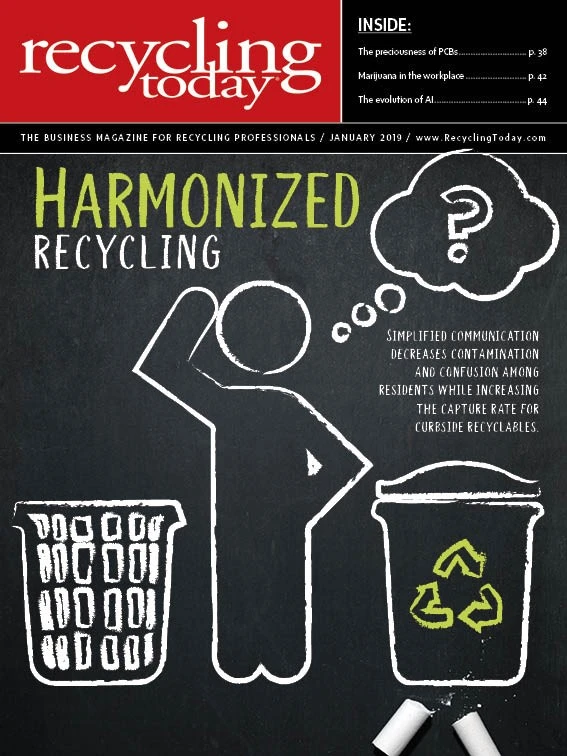While other export markets have stepped in and U.S. consumers have increased their buying to keep aluminum scrap generated in the U.S. flowing, analysts from London-based consulting and research firm CRU Group question their ability to continue consuming the excess scrap that is available on the market.
Mike Southwood and Greg Wittbecker, both Pittsburgh-based aluminum industry analysts with CRU Group, spoke during a Dec. 12, 2018, webinar hosted by the Aluminum Recyclers Council (ARC), Wauconda, Illinois.
“When talking about the scrap supply glut in the U.S., obviously a lot of it has to do with China,” Southwood said, noting that the country had become the largest consumer of U.S.-generated twitch and zorba in the last decade.

However, he added that when China implemented its Green Fence initiative in 2013 to crack down on inferior quality imports, U.S. exports of aluminum scrap to that country declined 16 percent. As of late 2018, these exports have decreased 62 percent from their peak, which he also attributed in part to China’s increased self-sufficiency in this area.
However, in 2018, total aluminum scrap exports from the U.S. have increased despite declining imports from China, Southwood added.
While the above factors are affecting China’s aluminum scrap buying from the U.S., the biggest deterrent, Southwood said, was the 50 percent duty that China placed on U.S. aluminum scrap imports in response to the Section 301 tariffs the U.S. levied on Chinese goods.
“I think if you talk to people in the industry, they would say that we probably have enough installed capacity to use more scrap.” – Greg Wittbecker, CRU Group
Southwood said U.S. exports of aluminum scrap to India and Malaysia, in particular, have increased by 176,000 tons in 2018. He said this has nearly covered the 204,000-ton gap created by the decline in trade with China.
“Obviously, if you are a domestic U.S. scrap generator, you are encouraged by the pace of exports that we have seen to these alternative markets,” Wittbecker said. “[But] the pace of increased exports to places like India, South Korea and Turkey is not sustainable based on the rates of growth in the CRU forecast that second alloy demand is going to grow in these markets.”
Within the U.S., Southwood said for much of 2018 the market could not absorb the overhang of aluminum scrap in the market, and he said this still seems to be the case.
However, some U.S. aluminum scrap consumers, including Tri-Arrows Aluminum Inc., Spectro Alloys Corp., Matalco, Arconic, JW Aluminum, Alcoa and Braidy Industries, are investing in added scrap processing capacity, Wittbecker said.
“Most of the investment that you are seeing right now in this market is from the mills that are looking to try to take advantage of this increase in automotive supply and not really all that much increase in capacity to take advantage of the increased zorba and twitch,” Wittbecker said. “I think if you talk to people in the industry, they would say that we probably have enough installed capacity to use more scrap. The real question on the obsolete grades is do we have sufficient growth in secondary demand to really allow us to absorb additional scrap. It’s the same issue that I mentioned about some of these external markets like India and Korea—a lot of supply is available, but can they use it and turn it into alloys that they in turn can sell themselves?”

Explore the January 2019 Issue
Check out more from this issue and find your next story to read.
Latest from Recycling Today
- BlueScope, BHP & Rio Tinto select site for electric smelting furnace pilot plant
- Magnomer joins Canada Plastics Pact
- Out of touch with reality
- Electra names new CFO
- WM of Pennsylvania awarded RNG vehicle funding
- Nucor receives West Virginia funding assist
- Ferrous market ends 2024 in familiar rut
- Aqua Metals secures $1.5M loan, reports operational strides





